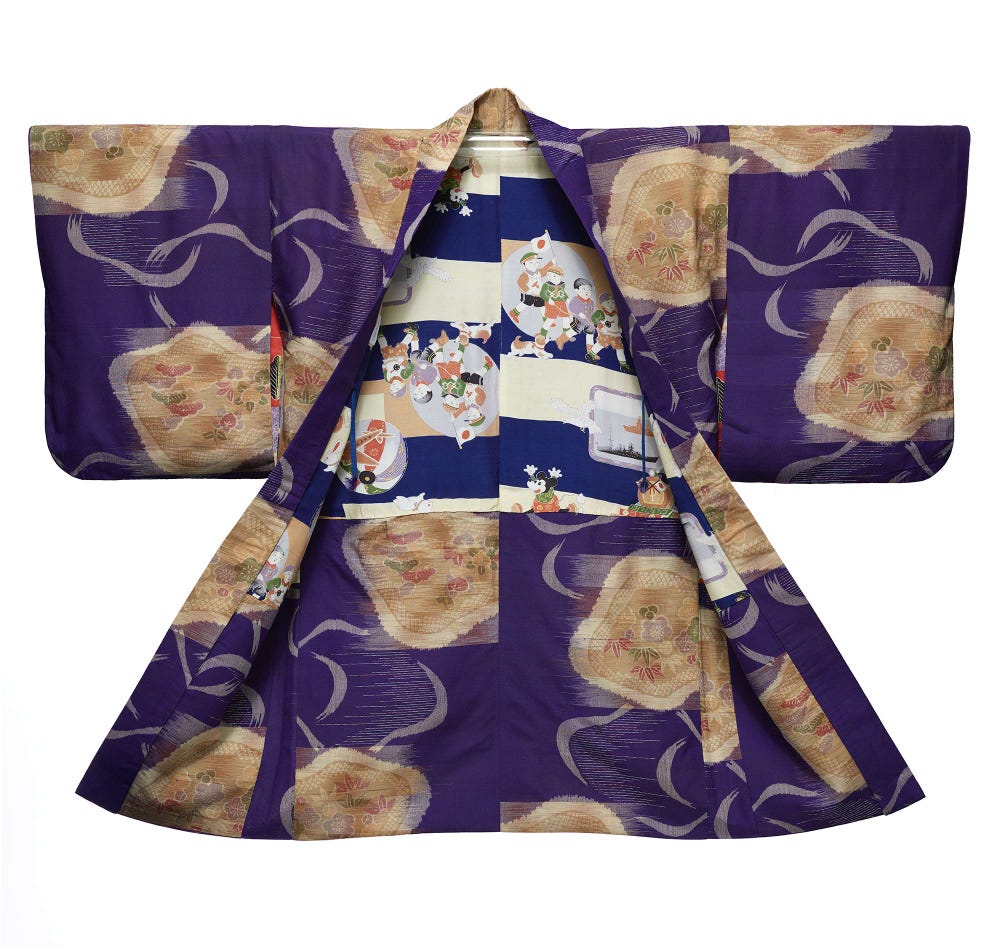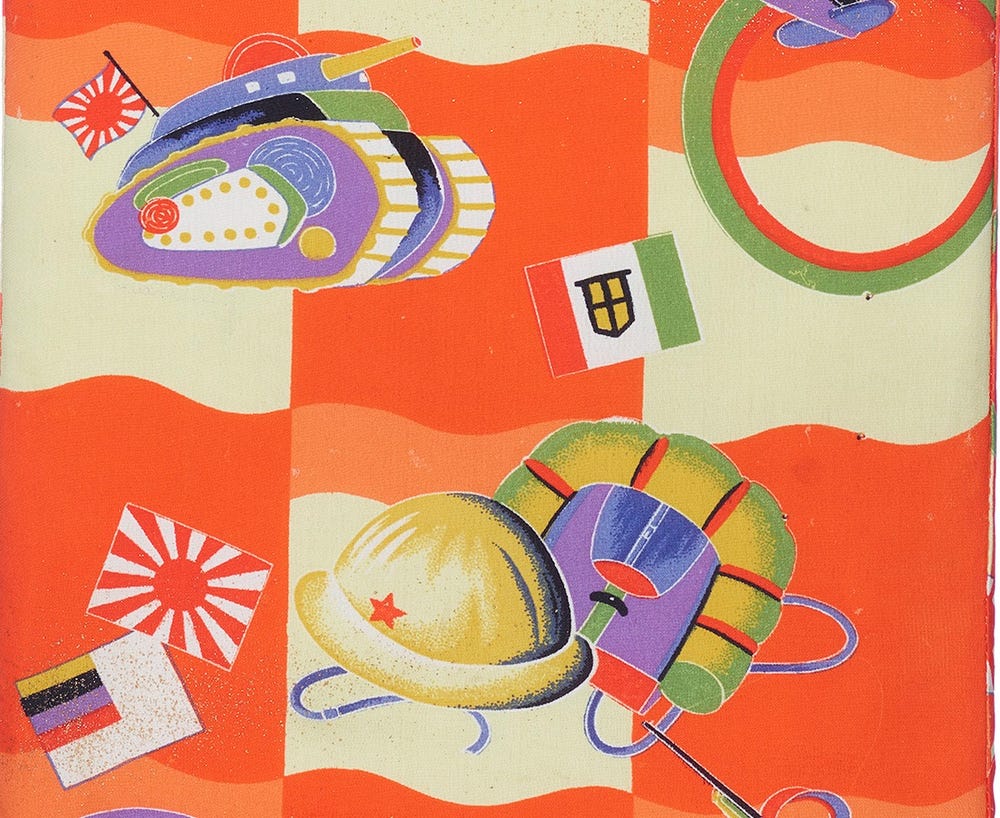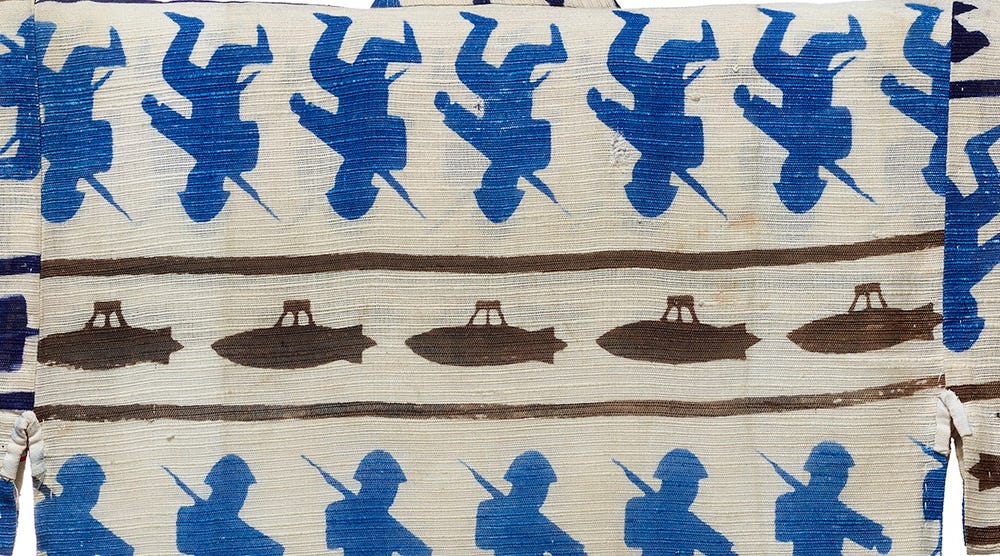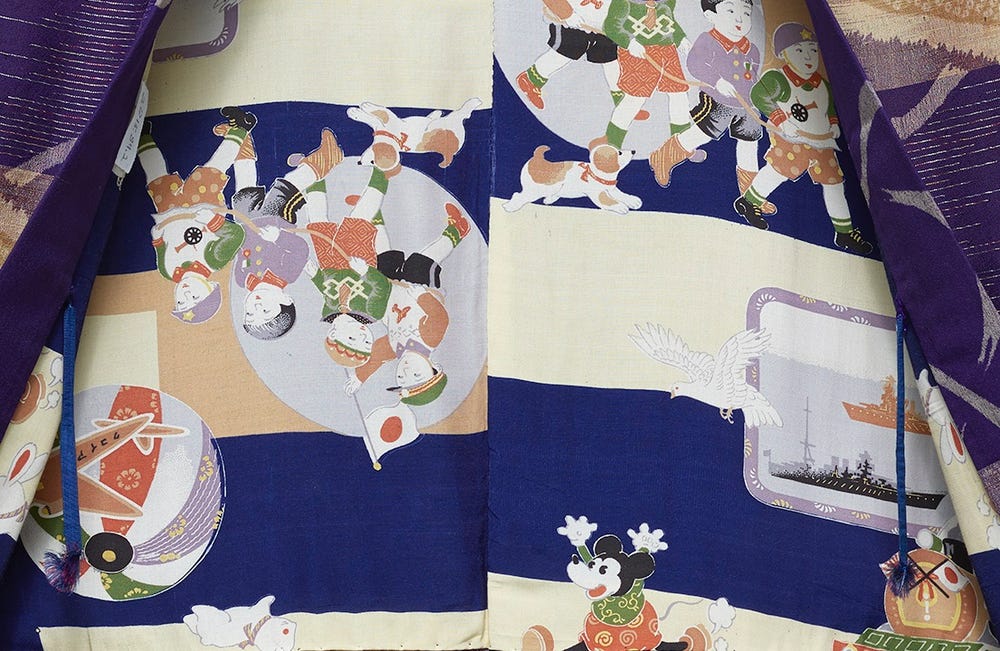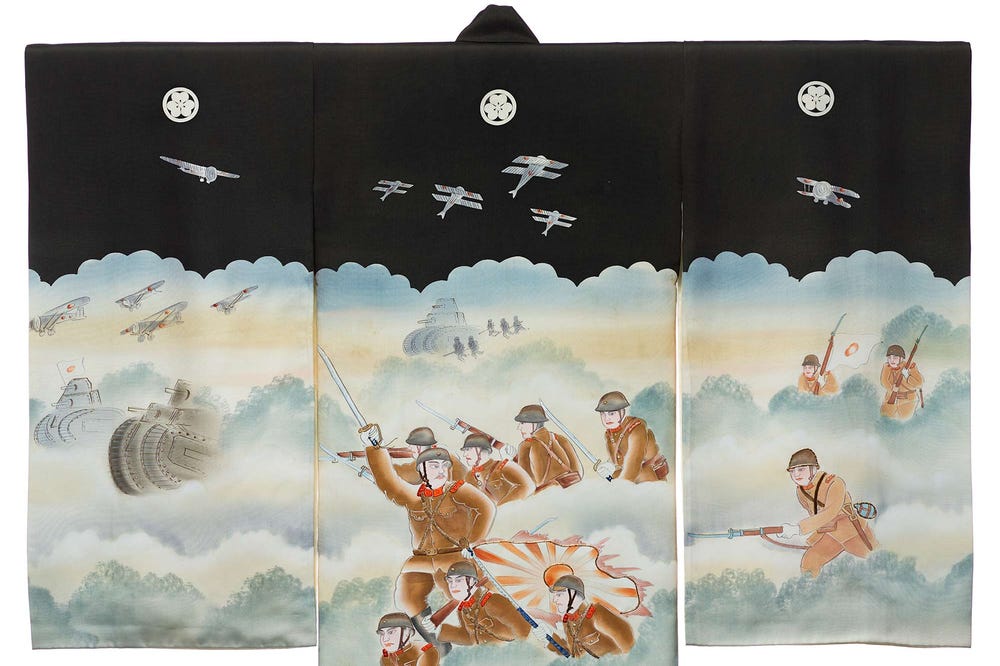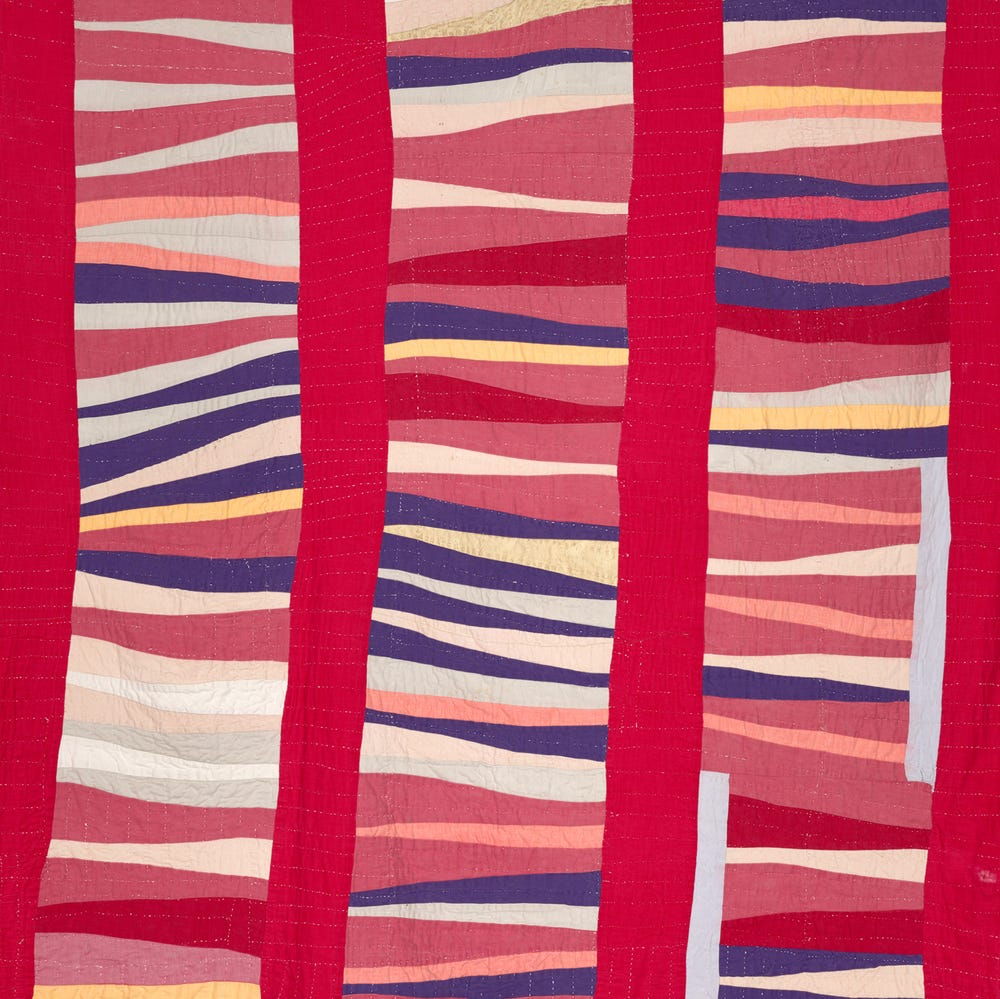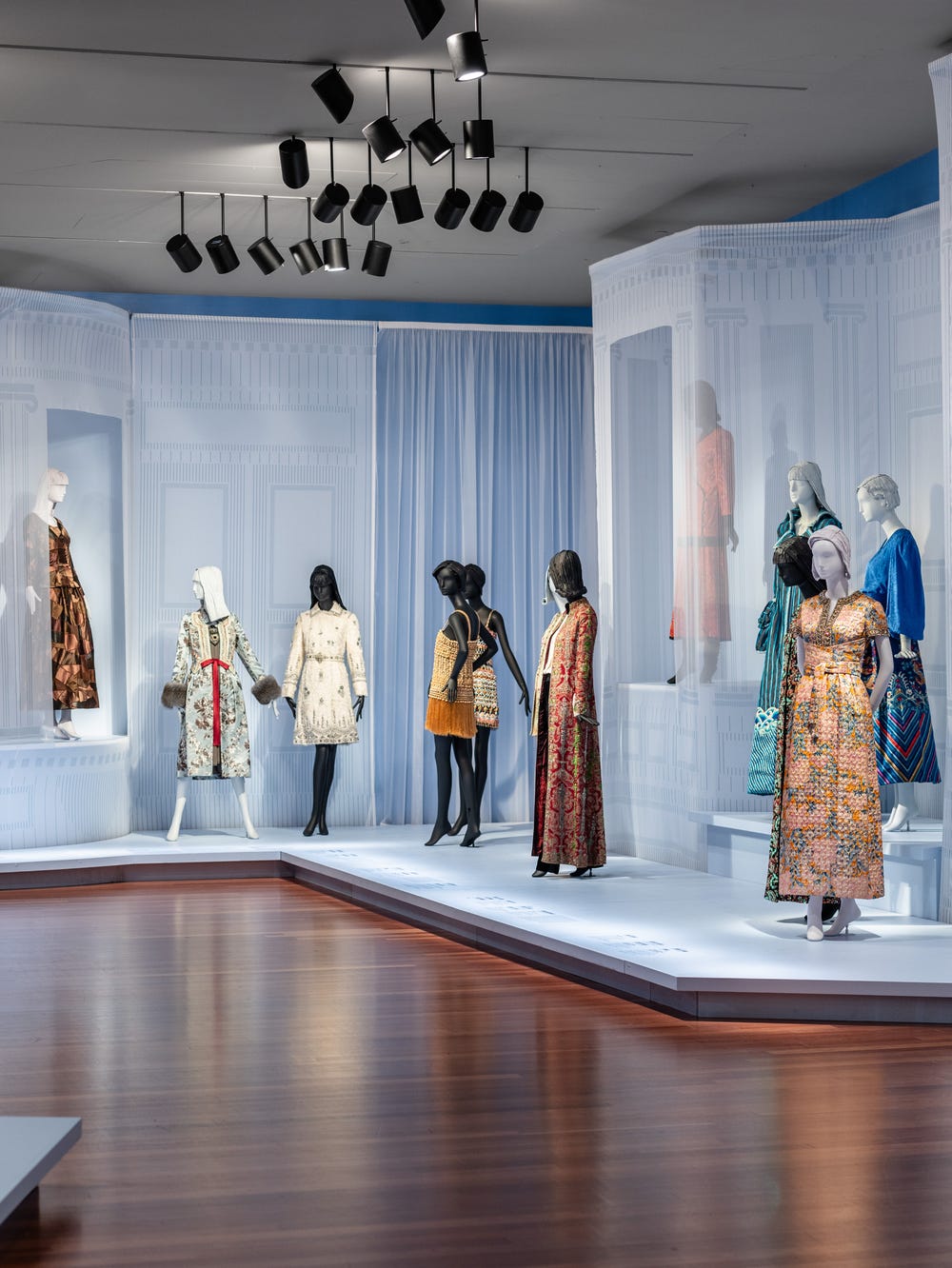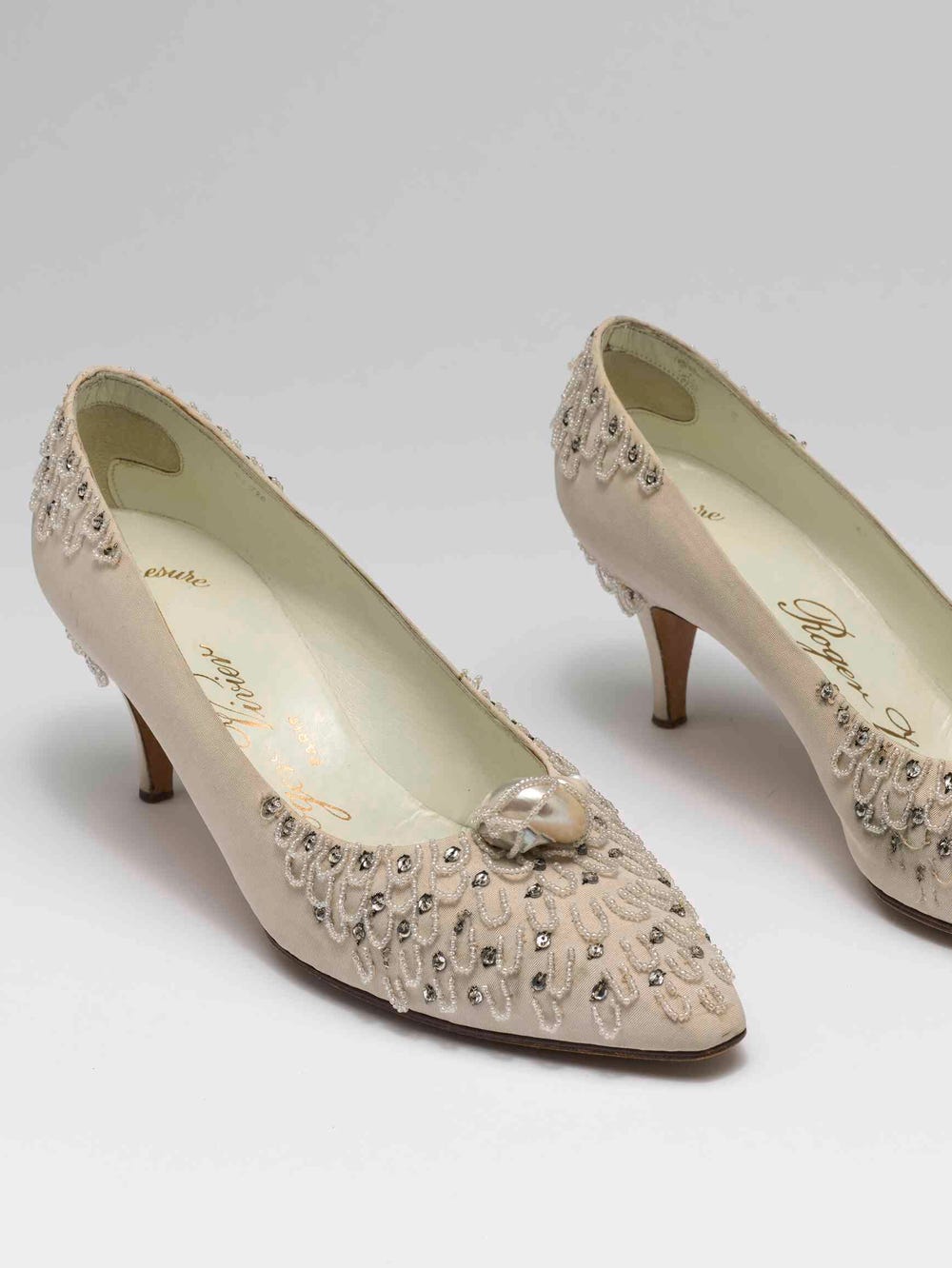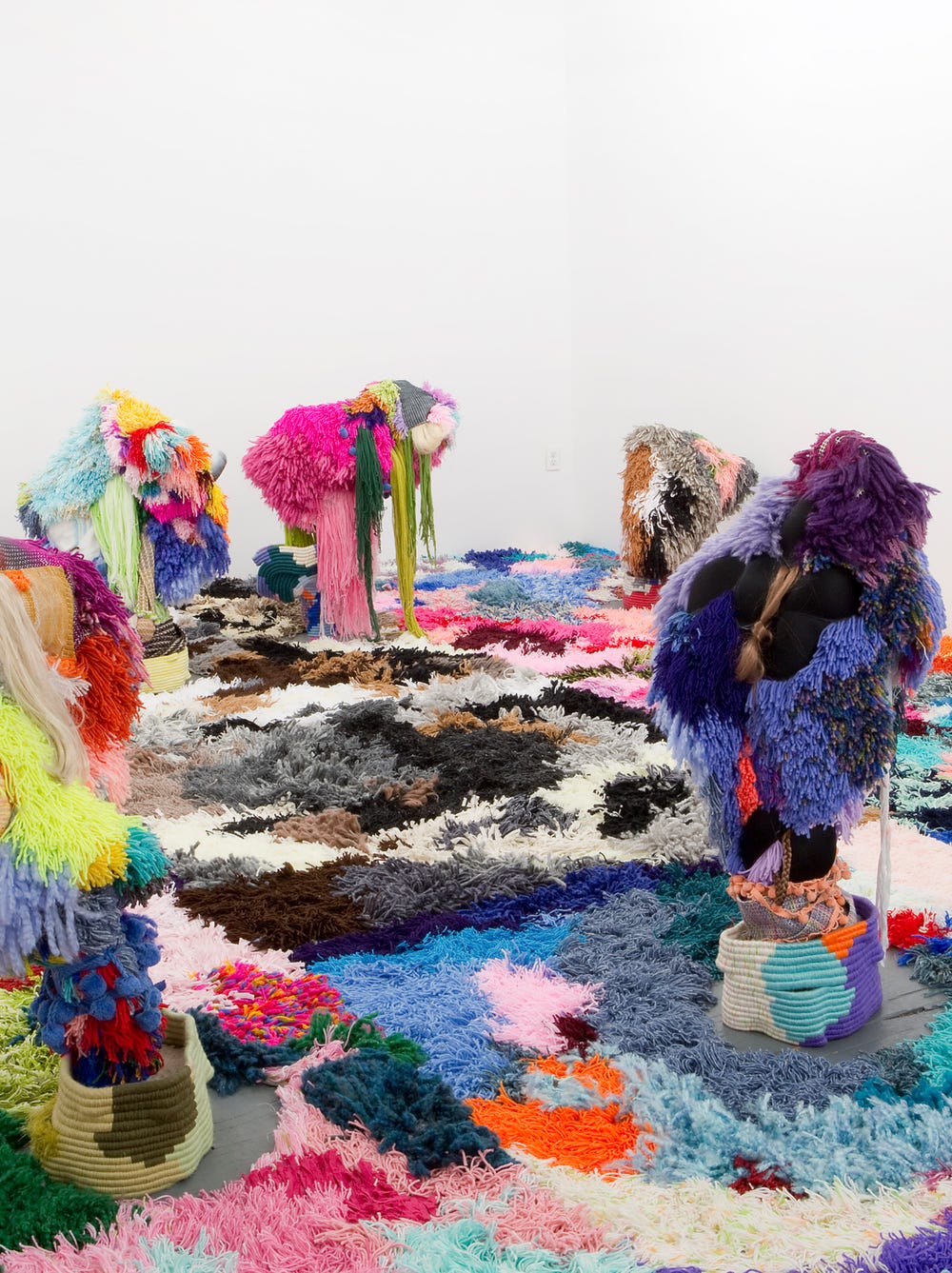It’s not unusual to see political messaging on clothing and accessories these days, from T-shirts promising hope to baseball caps vowing to make America great. But in the first half of the twentieth century, such messaging was rare in most places—except in Japan. From the turn of the twentieth century to the mid-1940s, it was common for Japanese men, women, and children to wear kimonos, obis (sashes), juban (under-kimono robes), and other traditional apparel dense with propagandist symbols and imagery.
In 2015, collector Erik Jacobsen donated a selection of these rare textiles to the Fine Arts Museums of San Francisco, and they were on view in Weapons of Mass Seduction: The Art of Propaganda, at the de Young through October 7, 2018. Here, Jacobsen’s collecting partner, Alan Marcuson, shares what first drew the duo to these fascinating garments in 2001 and what they’ve learned about them since then.
Fabric Foragers
We first discovered these textiles by accident over ten years ago. The first piece we found was a fragment of printed cloth depicting planes, tanks, and boy soldiers, drawn with refreshing colors. We were astonished and immediately intrigued and curious. We knew it was Japanese and recognized it as some sort of propaganda, but we didn’t know any more than that. Our appetites were whetted, and we wanted more. It soon developed into a full-blown obsession as we searched far and wide for more examples.
Graphic Designs
The more pieces we acquired, the more we came to appreciate the vivid creativity and imagination of these textiles; they are endlessly inventive, even playful and imbued with an avant-garde graphic verve and, not least, an extraordinary sense of color—obviously created by highly skilled but anonymous textile designers about whom we would like to know much more. We were also fascinated by the paradox of the grim history of Japan’s imperial period and these beautiful and graphically sophisticated textiles.
Mannered Manipulation
Unlike that of Japan’s axis ally, Nazi Germany, this propaganda material contains no racism, no overt expressions of racial superiority, no hatred. And remarkably, despite the much reported cult-like adoration of Japan’s Emperor, in our entire collection, there are no images or any reference to the Emperor or the imperial family (except one minor piece, commemorating the birth of the crown prince).
Excerpt adapted from Marcuson’s introduction in Dreams of Empire: Japanese Propaganda Textiles, by Dr. Barak Kushner (San Francisco: The MHJ Collection, 2011).
Girl’s formal kimono (haregi) (detail), ca. 1940–1941, Japan. Rayon (jinken); plain weave, printed (silk screen), applied gold paste. Gift of Erik Jacobsen. © Fine Arts Museums of San Francisco
With bold colors and graphics, this print was designed to celebrate the 1940 Tripartite Pact between Japan, Germany, and Italy; it features the flags of the new allies alongside military gear that could easily be mistaken for toys.
Boy’s summer kimono (detail), ca. 1940, Japan. Wood pulp fiber (sufu); plain weave, printed (silk screen). Gift of Erik Jacobsen. © Fine Arts Museums of San Francisco
The fabric of this boy’s kimono tells its own story. It’s composed of sufu, a material made from bark, wood pulp, and small amounts of wool and cotton. Sufu was first sold in Japan in 1940 as an alternative to silk (silk was needed for war necessities like parachutes and artillery packaging). But the material was a disappointment—it tore easily and could handle only a few washings—and sufu soon became a synonym for any item of poor quality.
Woman’s haori (details), 1931–1945, Japan. Rayon, metallic thread; balanced plain weave with discontinuous supplementary weft patterning, stencil printed warp and weft (heiyo-gasuri meisen); balanced plain weave lining, printed (silk screen). Gift of Erik Jacobsen. © Fine Arts Museums of San Francisco
With children marching under a Japanese flag (left) and Mickey Mouse skipping beside a rabbit (right), the print on the lining of this haori (kimono-style jacket) seems innocent at first. However, beginning in the early 1930s, Mickey Mouse had become a visual symbol of the American aggressor in Japan, and his presence in this design is as a threat, not as a friend.
